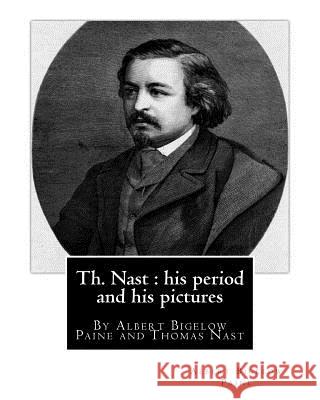Th. Nast: his period and his pictures, By Albert Bigelow Paine and Thomas Nast: with illustrations By Thomas Nast (September 27, » książka
Th. Nast: his period and his pictures, By Albert Bigelow Paine and Thomas Nast: with illustrations By Thomas Nast (September 27,
ISBN-13: 9781537004730 / Angielski / Miękka / 2016 / 428 str.
Th. Nast: his period and his pictures, By Albert Bigelow Paine and Thomas Nast: with illustrations By Thomas Nast (September 27,
ISBN-13: 9781537004730 / Angielski / Miękka / 2016 / 428 str.
(netto: 78,22 VAT: 5%)
Najniższa cena z 30 dni: 76,99 zł
ok. 13-18 dni roboczych.
Darmowa dostawa!
Thomas Nast (September 27, 1840 - December 7, 1902) was a German-born American caricaturist and editorial cartoonist considered to be the "Father of the American Cartoon."He was the scourge of Democratic Representative "Boss" Tweed and the Tammany Hall Democratic party political machine. Among his notable works were the creation of the modern version of Santa Claus (based on the traditional German figures of Sankt Nikolaus and Weihnachtsmann) and the political symbol of the elephant for the Republican Party (GOP). Contrary to popular belief, Nast did not create Uncle Sam (the male personification of the American people), Columbia (the female personification of American values), or the Democratic donkey, though he did popularize these symbols through his artwork. Nast was associated with the magazine Harper's Weekly from 1859 to 1860 and from 1862 until 1886. Albert Boime argues that: As a political cartoonist, Thomas Nast wielded more influence than any other artist of the 19th century. He not only enthralled a vast audience with boldness and wit, but swayed it time and again to his personal position on the strength of his visual imagination. Both Lincoln and Grant acknowledged his effectiveness in their behalf, and as a crusading civil reformer he helped destroy the corrupt Tweed Ring that swindled New York City of millions of dollars. Indeed, his impact on American public life was formidable enough to profoundly affect the outcome of every presidential election during the period 1864 to 1884.......... Albert Bigelow Paine (July 10, 1861 - April 9, 1937) was an American author and biographer best known for his work with Mark Twain. Paine was a member of the Pulitzer Prize Committee and wrote in several genres, including fiction, humor, and verse.Biography Paine's house in Xenia. Paine was born in New Bedford, Massachusetts and was moved to Bentonsport, Iowa when one year old. From early childhood until early adulthood, Paine lived in the village of Xenia in southern Illinois; here he received his schooling. His home in Xenia is still standing. At the age of twenty, he moved to St. Louis, where he trained as a photographer, and became a dealer in photographic supplies in Fort Scott, Kansas. Paine sold out in 1895 to become a full-time writer, moving to New York. He spent most of his life in Europe, including France where he wrote two books about Joan of Arc. This work was so well received in France that he was awarded the title of Chevalier in the Legion d'honneur by the French government....











